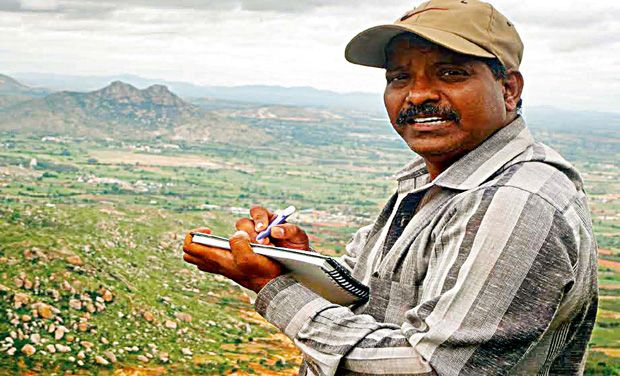Bengaluru: They fought the Cholas, the Cheras and the Pandyans in the first manifestation of a war over the Cauvery waters.
Their settlements straddled a key trade route across South India. And they practiced Jainism. Who are they? Bengaluru’s first ever settlers.
The IT hub may be bursting at the seams today with close to 10 million people drawn from across the world, but the city’s origins have been traced back to 1,500 years ago when the Prakrut speaking Kalabhras, a cattle grazing community of cattle herders that called Nandi Hills and Kalavarahalli home, around the 5th century A.D, put down their roots here.
Two city based historians, Mr S K Aruni, Deputy Director of the Indian Council of Historical Research, and a history lecturer, S V Rajesh have dug up these and other fascinating facts of the origins of Bengaluru, in a two year long study that charts the arrival of the Kalabhras, whose descendants in the 21st century go by the surname Kallars. Traces of the Kababhra community can be seen around Nandi Hills even today.
Bengaluru may today be bursting at the seams with people, but it all began hundreds of years ago with its first settlers , the Kalabhras, a cattle grazing community that lived between Nandi Hills and Kalavarahalli around the 5th century and spoke Prakrut, one of the ancient languages of India.
These and many other facts about the city’s origins have been dug up in a two year long study by two city historians, who claim that civilization began in and around Bengaluru with the arrival of the Kalabhras.
Mr S K Aruni, Deputy Director of the Indian Council for Historical Research, who has done the research along with a history lecturer , S V Rajesh, says traces of the Kababhra community can be seen around Nandi Hills even today.
The team ,which has found artifacts, bricks and roof tiles from 1,500 years ago, has tried to trace the social and economic status of the community, whose arrival led to permanent settlement of communities in and around Bengaluru in later years.
“The community lived near two rivers, Arkhavathy and Dakshin Pinakini , the major tributaries of the Cauvery. Besides water, the vegetation and grasslands in these areas provided it a perfect spot to lay down roots.
Until then communities had only wandered through Bengaluru. But for the first time in the 5th century, this community decided to settle down here,” Mr Aruni explains.
The Kalabhras were not only involved in cattle grazing but were brave warriors too, according to him, fighting off invaders like armies of the Chola, Cheras and Pandyan kings, which tried to stake a claim to their land.
“There were two major invasions by the Chola army, but on both the occasions they were defeated by the Kalabhras. The victory of the Kalabhras has been mentioned in stone inscriptions in Tamil Nadu.
Interestingly, there is no mention of any ruler or a king of the Kalabhras. It appears the community had no leader, but got united at the time of war. It followed Jainism as indicated by the oldest Jain inscription , dating back to 896 AD, found near the Venugopal Temple in Nandi Hills,” Mr Aruni adds.
During excavation, the team also tracked the trade route that existed between the land occupied by the Kalabhras and other parts of South India. “There is a trade route which was later taken over by major roads as time progressed,” he explains.

